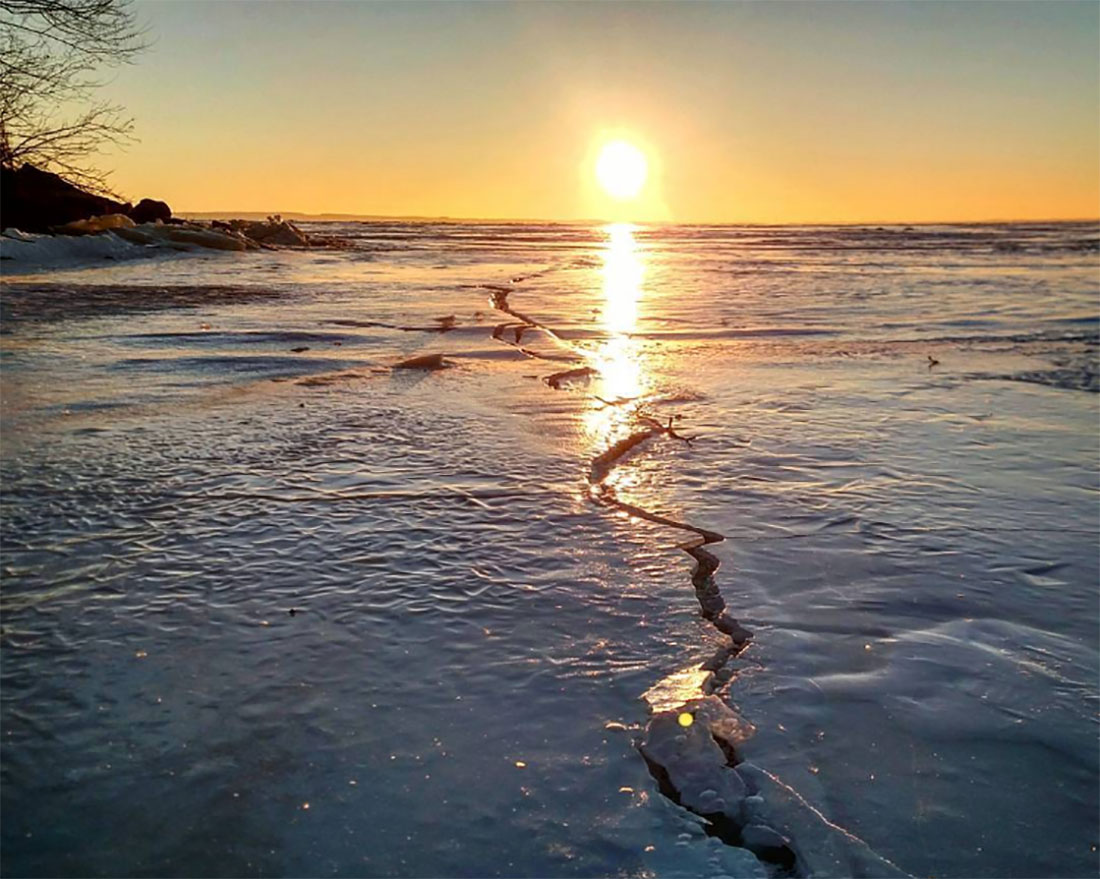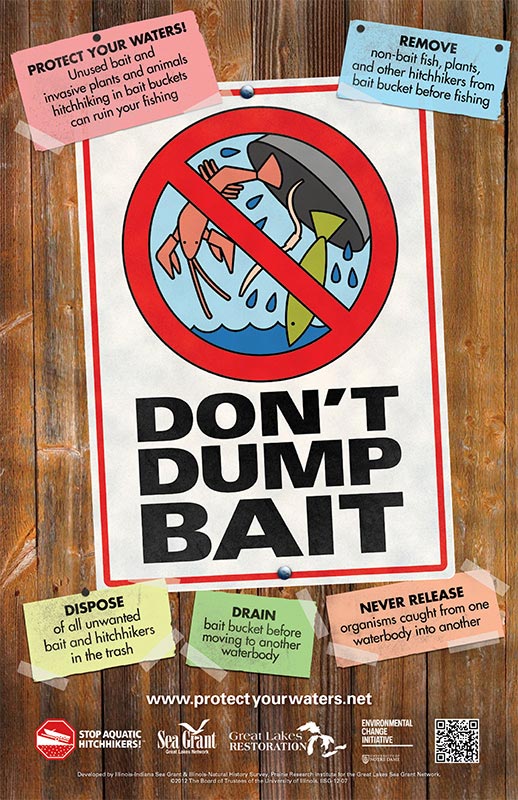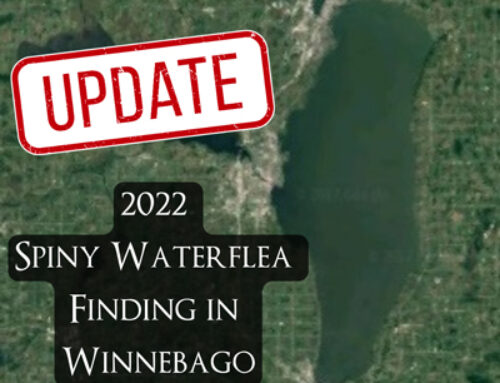Written by Annette Cornell, AIS Program Volunteer
Snow or Rain? Invasive Species Precautions Remain the Same
As outdoor enthusiasts, many of us are at least acutely aware of aquatic invasive species. Zebra mussels, curly-leaf pondweed, spiny water fleas and Eurasian watermilfoil are among the most common aquatic invasives in Wisconsin waters. When we consider these species, however, we might only think of summer days where boat-launching is the norm and park rangers are available to remind us of invasives’ staggering environmental impacts. What is important to remember is that invasive species act year-round; even during the winter and spring, their populations can spread!
While some invasive species can survive and thrive in the transitioning winter to spring weather, there are actions to take to prevent their spread. The destructive nature of invasive species is a threat to our local ecosystems and the outdoor activities we cherish. Becoming familiar with these species — and owning our responsibility in stopping their spread — is key to their prevention.
Step One: Know Your Invasives
 Zebra mussels are fingernail-sized mollusks that filter algae, which is a primary food source for many native fish, out of water bodies. While zebra mussels are generally a summertime concern, they travel from the cold shallows to the warmer depths in winter to avoid freezing. Thus, any mud extracted during the winter months could still contain mussels or their larvae.
Zebra mussels are fingernail-sized mollusks that filter algae, which is a primary food source for many native fish, out of water bodies. While zebra mussels are generally a summertime concern, they travel from the cold shallows to the warmer depths in winter to avoid freezing. Thus, any mud extracted during the winter months could still contain mussels or their larvae.
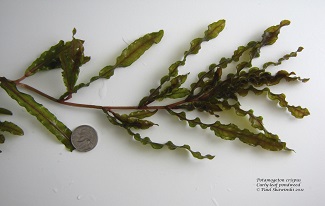 Curly-leaf pondweed is a rooted plant with “wavy, lasagna-like” leaves and which thrives in the winter temperatures. Using its love for the cold to its advantage, the curly-leaf pondweed outpaces native plant growth, robbing them of sunlight and threatening local biodiversity. Also concerning is that the pondweed provides unsuitable food and shelter for native animals.
Curly-leaf pondweed is a rooted plant with “wavy, lasagna-like” leaves and which thrives in the winter temperatures. Using its love for the cold to its advantage, the curly-leaf pondweed outpaces native plant growth, robbing them of sunlight and threatening local biodiversity. Also concerning is that the pondweed provides unsuitable food and shelter for native animals.
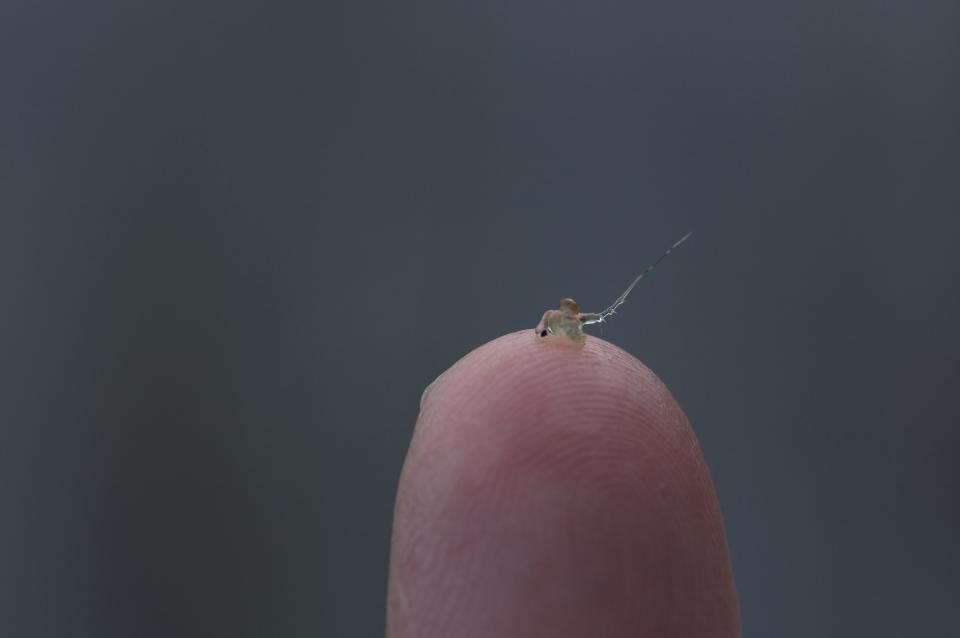 Spiny water fleas are miniscule and difficult to see, as they have translucent bodies. Despite their evasive appearance, they are predators which snack on zooplankton, which puts them in competition with young fish for food. Young fish also struggle with eating the fleas due to their long, spiny tails, so the increased absence of zooplankton puts them at even greater risk.
Spiny water fleas are miniscule and difficult to see, as they have translucent bodies. Despite their evasive appearance, they are predators which snack on zooplankton, which puts them in competition with young fish for food. Young fish also struggle with eating the fleas due to their long, spiny tails, so the increased absence of zooplankton puts them at even greater risk.
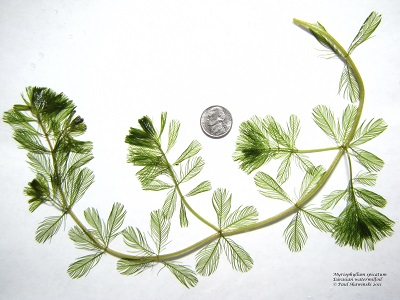
Eurasian watermilfoil is another rooted plant, but it has feather-like leaves. Because Eurasian watermilfoil is an early grower which is also tolerant to cold water, it is much like curly-leaf pondweed, growing sooner and more abundantly than native plants. Dense mats of the dominant invasive weeds can gather at the surface and impede recreational activities, too.
Step 2: Prevent the Spread
- Before fishing, check your bait. The best practice is to buy from a local bait dealer who has certified that the bait has come from a VHS-free zone.

Viral hemorrhagic septicemia, or VHS, is a deadly fish virus by which more than 25 fish species are made vulnerable.
- After fishing, inspect your equipment for aquatic plants and animals. Remove any debris or vegetation, and rinse equipment that has been soiled with mud from the water.
- Toss your extra bait into the trash, not the water. Not only is it illegal to release bait in Wisconsin, Minnesota and Michigan, but it also presents the opportunity for invasives to spread from the body of water where the bait came from. Always put excess bait into the trash, and never move live fish from their originating water bodies!
- Clean and dry your equipment between trips. While moving from lake to lake — or even hole to hole on the same lake — may be fun for recreation, both could mean the introduction of invasives to new areas. Between trips, ensure that your equipment is cleaned and dried to reduce the chance of surviving invasives. For spiny water fleas, drying equipment for seven days is enough to kill them.
Native fish and plant populations depend on our choices to sustain them. From our boats to our fishing lines and our bait buckets to our ice augers, we have to remain mindful about how aquatic invasive species can hitchhike on our equipment and spread. Protecting our waters against invasives is a year-round activity; as recreators we must prioritize conservation, too!
To learn more, visit these websites!
Gaskill, Beckie. “Invasive Species Still a Concern During Ice Fishing Season.” The Lakeland Times, 2017, https://www.lakelandtimes.com/articles/invasive-species-still-a-concern-during-ice-fishing-season/.
MN Department of Natural Resources. “Eurasian watermilfoil (Myriophyllum spicatum).” https://www.dnr.state.mn.us/invasives/aquaticplants/milfoil/index.html.
United States Geological Survey. “What are zebra mussels and why should we care about them?” USGS, https://www.usgs.gov/faqs/what-are-zebra-mussels-and-why-should-we-care-about-them?qt-news_science_products=0#qt-news_science_products.
Wisconsin Department of Natural Resources. “Spiny Water Flea.” https://dnr.wisconsin.gov/topic/Invasives/fact/SpinyWaterFlea.html.
Wisconsin Department of Natural Resources. “VIRAL HEMORRHAGIC SEPTICEMIA FISH VIRUS.” https://dnr.wisconsin.gov/topic/Fishing/vhs.
Questions? Comments? Contact Chris Acy, the AIS Coordinator covering Brown, Outagamie, Fond du Lac, Calumet, and Winnebago Counties at (920) 460-3674 or chris@fwwa.org!
Follow the Fox Wolf Watershed Alliance’s Winnebago Waterways Program on our Winnebago Waterways Facebook page or @WinnWaterways on Twitter! You can also sign-up for email updates at WinnebagoWaterways.org.
Winnebago Waterways is a Fox-Wolf Watershed Alliance program. The Fox-Wolf Watershed Alliance is an independent nonprofit organization that identifies and advocates effective policies and actions that protect, restore, and sustain water resources in the Fox-Wolf River Basin.
Photo Credit: Paul Skawinski, Chris Hagen, SeaGrant

